

Unique Romanesque Revival facade with the griffin fountain in the plazaAfter Eli Whitney's invention of the cotton gin in 1793, it became possible to process large amounts of cotton. This building indicates the importance of cotton trading to Savannah. Originally called King Cotton's Palace, it was built over Factor's Walk, an existing street where cotton traders and others in Savannah's commerce worked. The port here was the second busiest on the Atlantic. Preston, a Boston architect, won the design competition; his resulting building, owing to the Romanesque revival works of Richardson of Boston or Frank Furness in Philadelphia, was unusual for Savannah. |

| |
Facade with terra cotta designs | ||
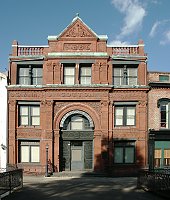
|
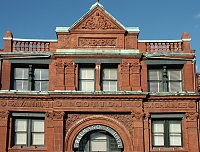
|

|
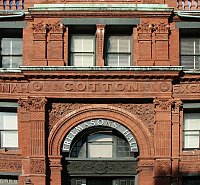
|
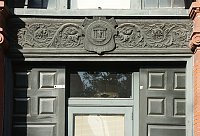
|
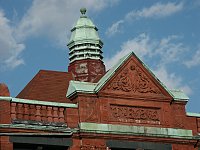
|
The Griffin fountain (or symbol of Mark the Evangelist?)Constructed in 1889, this winged lion fountain stands in the plaza in front of the Cotton Exchange Building. The iron railing around it has panels with medallions of writers and statesmen; this railing was salvaged from the ante-bellum Barclay-Wetter house. Newspaper report indicate that in August, 2008, this terra cotta lion was destroyed when a car rammed into it. This picture predates that incident. |
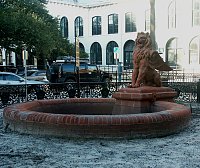
| |
 Click here to return to index of art historical sites.
Click here to return to index of art historical sites.
 Click here to return to index of artists and architects.
Click here to return to index of artists and architects.
 Click here to return to chronological index.
Click here to return to chronological index.
 Click here to see the home page of Bluffton University.
Click here to see the home page of Bluffton University.

